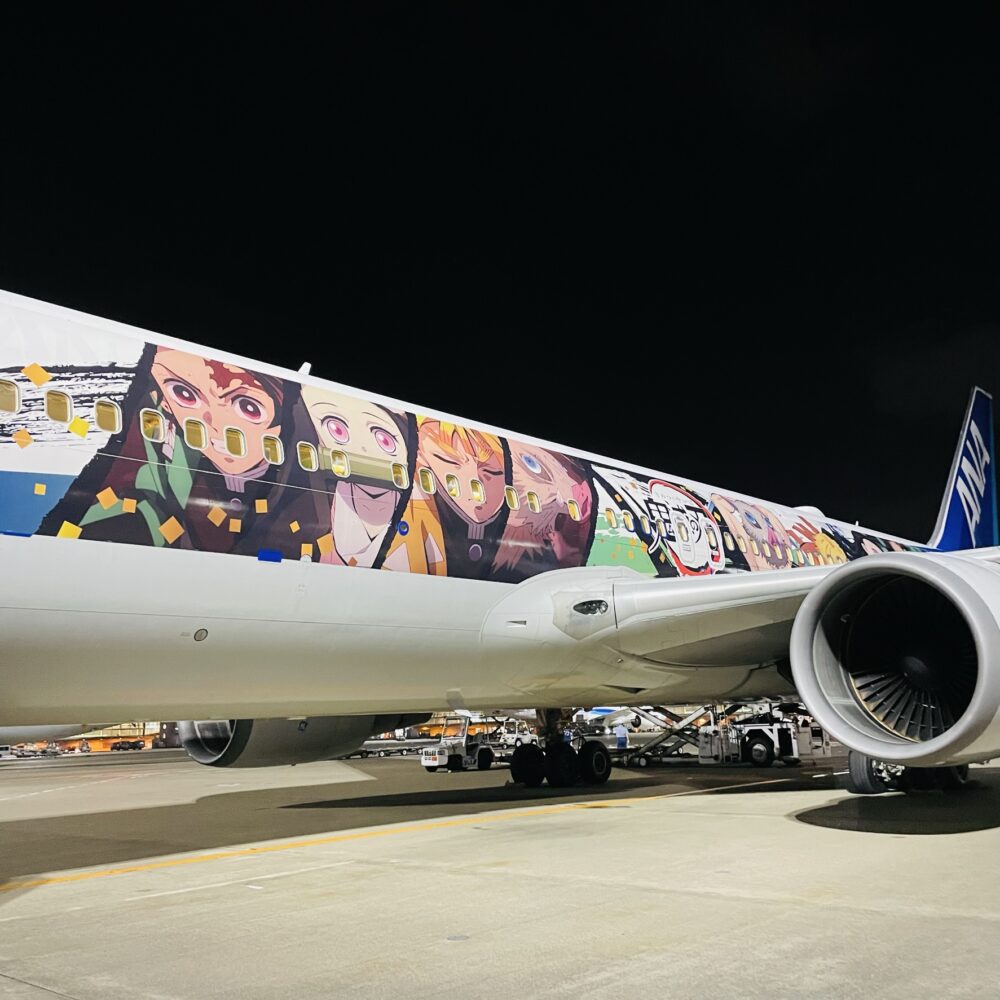An Enriching Trip: Delving Deep into the Charms of Kagoshima
Table of Contents
1: Lunch (ramen noodles) and dessert (shaved ice)
2: Sengan-en Garden
3: Tram and Shiroyama Hotel
4: Dinner and bar
5: Lunch (eel bowl)
6: Visit to Kagoshima Prefectural Office
7: Dinner (Yamagataya Restaurant)
8: Airplane and sky
1: Lunch (ramen noodles) and dessert (shaved ice)
I have been to Kagoshima to explain our services to the Kagoshima Prefectural Government and hotels. I will post the places I ate and visited during my visit.
When you arrive at Kagoshima Airport and head to the bus stop, you will find a footbath called “Oyattosaa.” “Oyattosaa” is a Kagoshima dialect word meaning “Thank you for your hard work” or “Thank you for your effort.” In front of the footbath is a wooden carving of Takamori Saigo. There are only a few footbaths at airports such as Kagoshima Airport and Oita Airport.
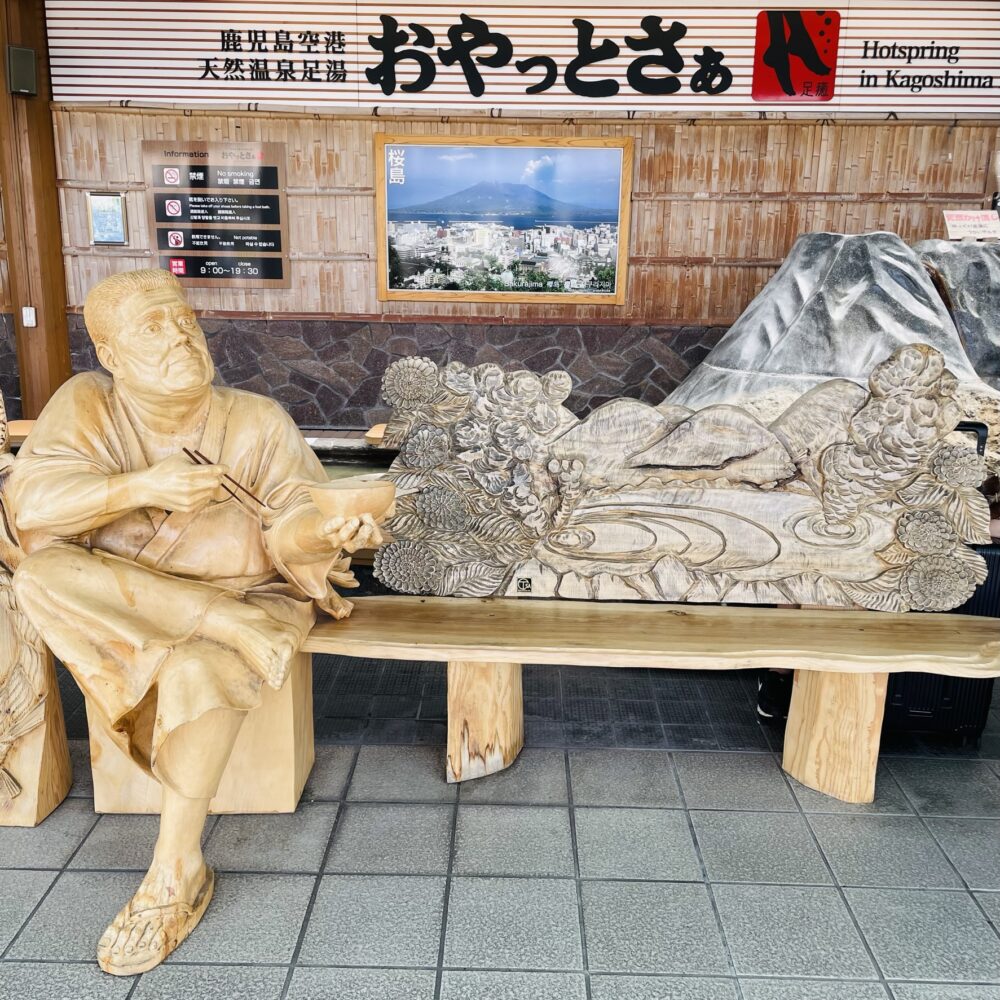
After going to Kagoshima City and checking into my reserved hotel, I visited a nearby ramen restaurant, Ramen Kokinta. Ramen Kokinta is Kagoshima’s No. 1 ramen restaurant, scoring 3.66 on the Tabelog. I expected a long line, but surprisingly I could get in without waiting.
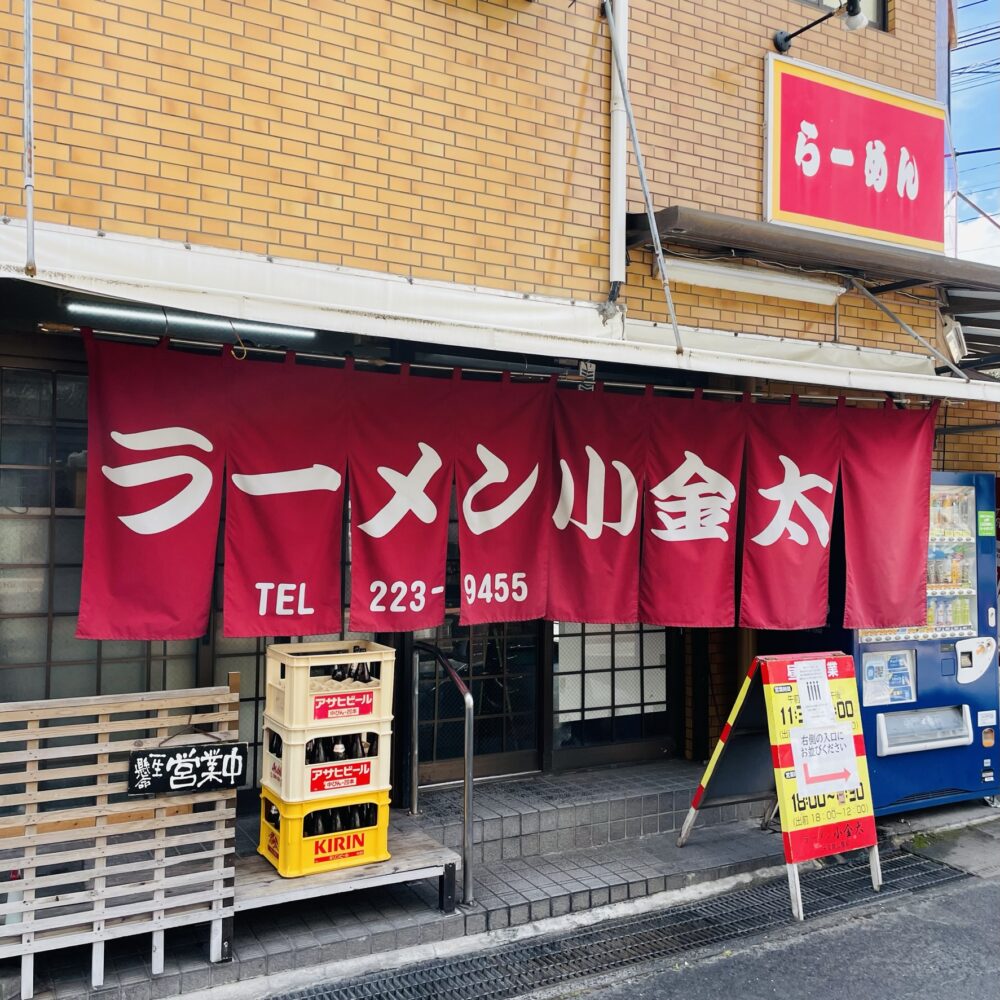
Kagoshima ramen varies from store to store but is characterized by a semi-muddy soup based on pork bones and straight noodles. Hakata ramen soup is more noticeably white based on the same pork bone broth. In contrast, Kagoshima ramen has a brownish broth.

At Ramen Kokinta, I ordered “Ramen with Pork Bone” and “Half Fried Rice. Tonkotsu” is a local Kagoshima dish. It was the first time I tried “Ramen with Pork Bone,” I was impressed by how well the soup and noodles went together.
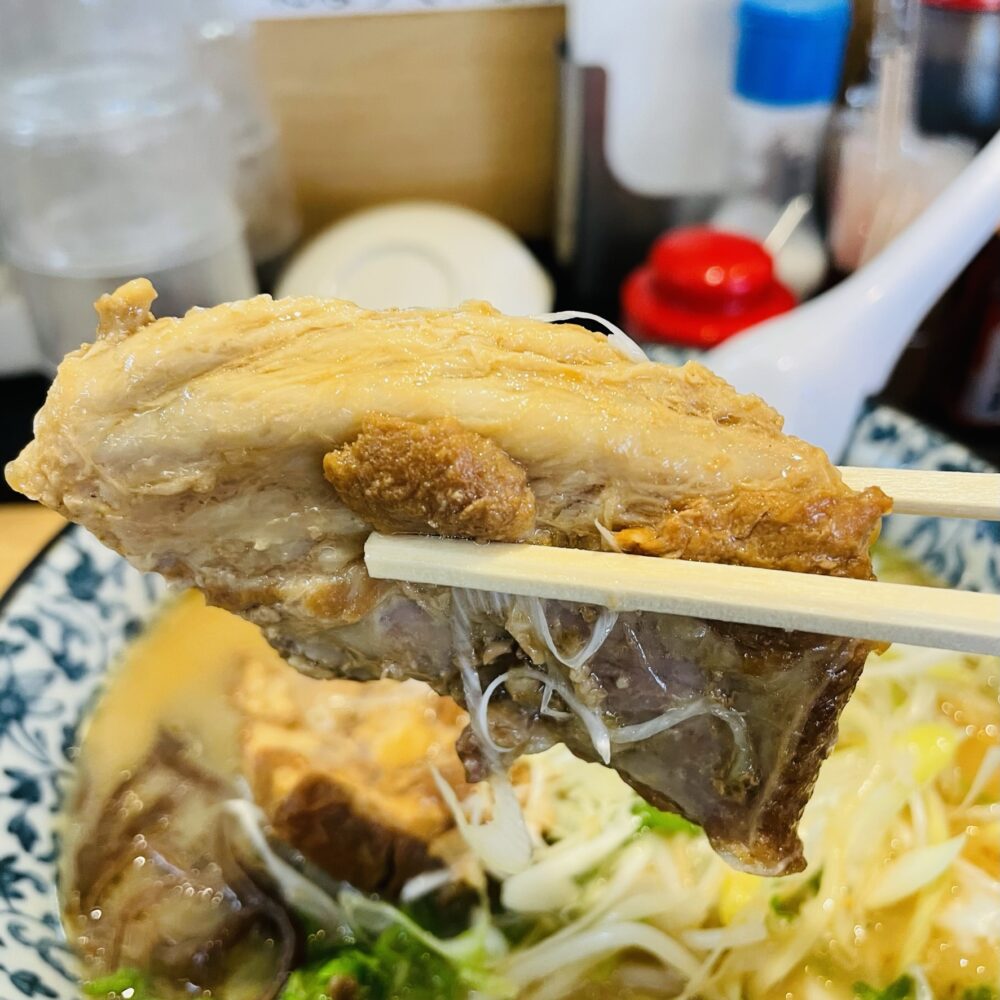
Afterward, I had a shaved ice “Shirokuma” at “Tenmonkan Mujaki” near “Ramen Kokinta.” The nationally famous shaved ice “Shirokuma” originated at “Temmonkan Mujaki.” The store had a sign saying that “Shirokuma” was celebrating its 74th anniversary. “Shirokuma” is a shaved ice with raisins as the eyes and mouth and cherries as the nose. It does not look much like a “Shirokuma,” but it tastes excellent, and I can see why it is so popular.
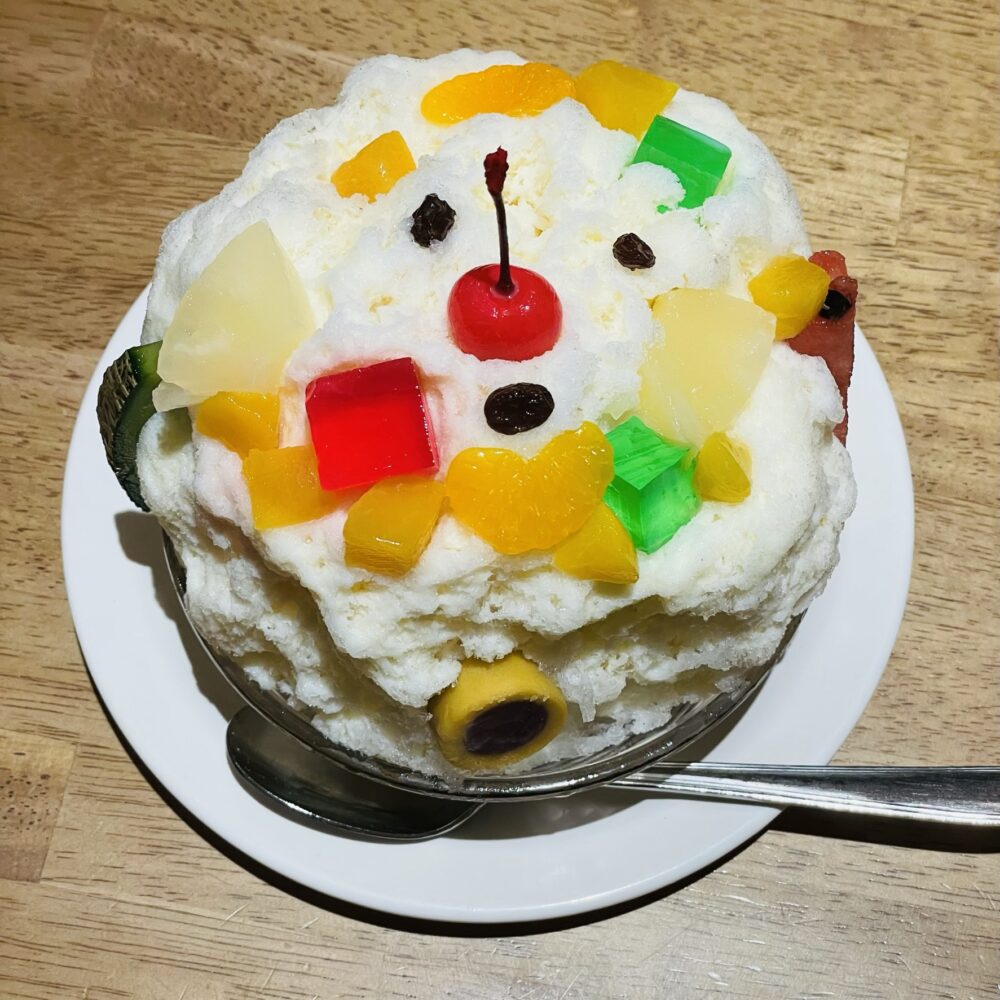
2: Sengan-en Garden
After dining at two renowned Kagoshima eateries, Ramen Kokinta, and Temmonkan Mujaki, I headed to the historic Sengan-en Garden. This garden was once a villa of the prestigious Shimazu family and is now recognized as a national scenic beauty spot. Thoughtfully designed with Sakurajima Island as its backdrop, I was treated to a breathtaking island view during my visit.
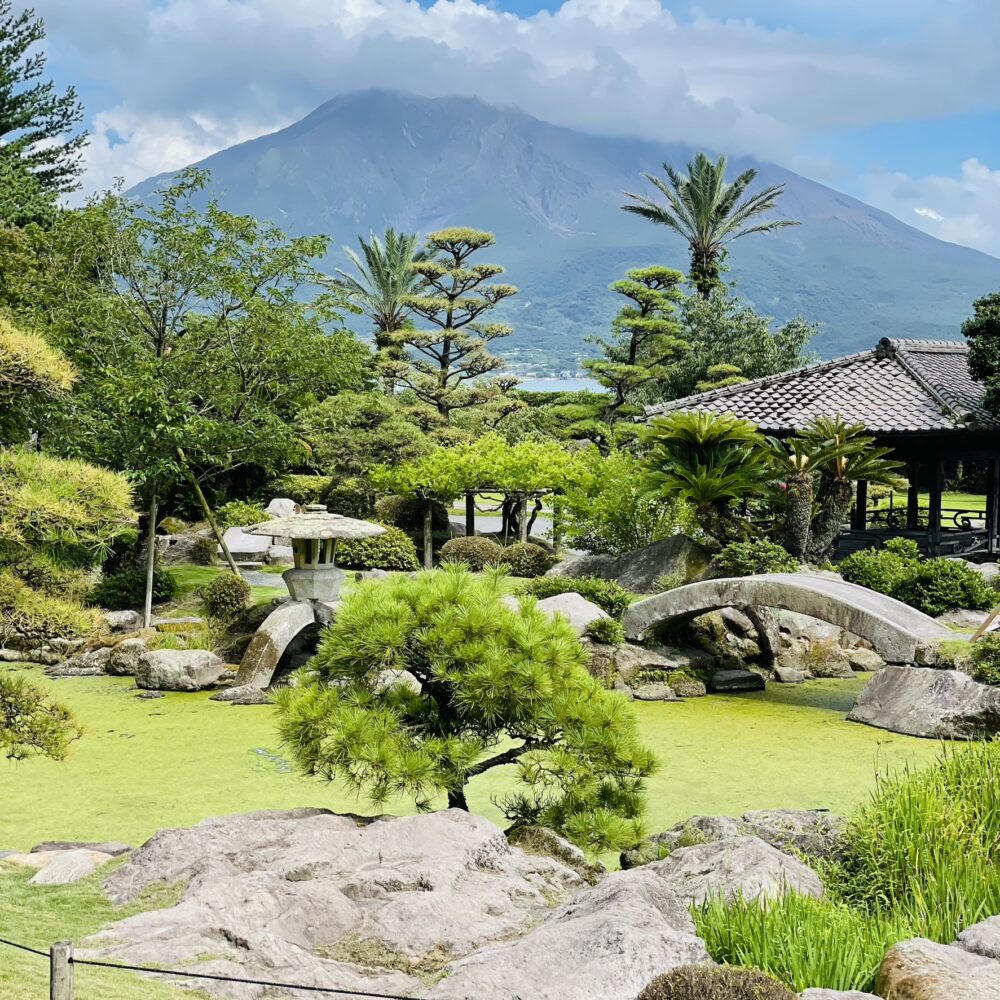
At Senganen, they offer free guided tours of the houses. The detailed guide was very informative. The rooms in Senganen are lovely, and I was delighted with my visit.
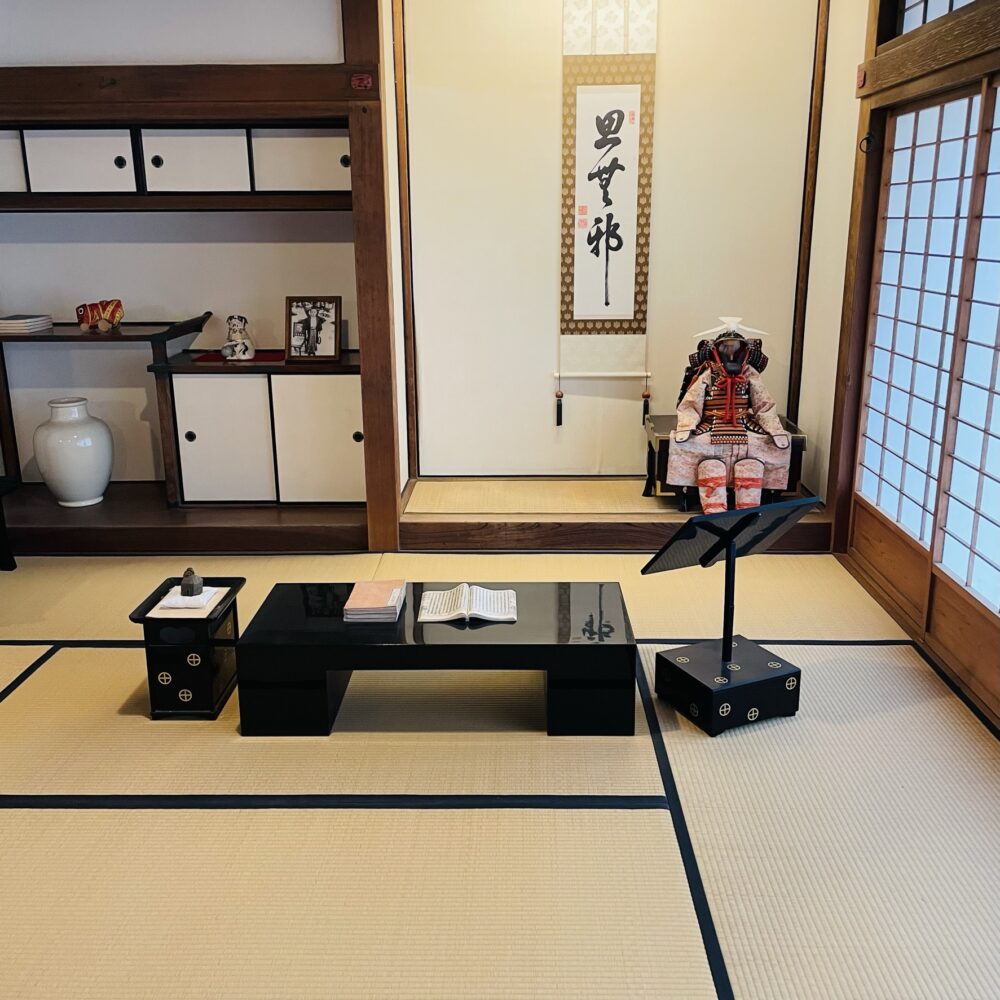
The reverberatory furnace in Senganen Garden is a component of the World Heritage Site “Industrial Revolution Heritage of Meiji Japan: Iron and Steel Making, Shipbuilding, and Coal Industry.”
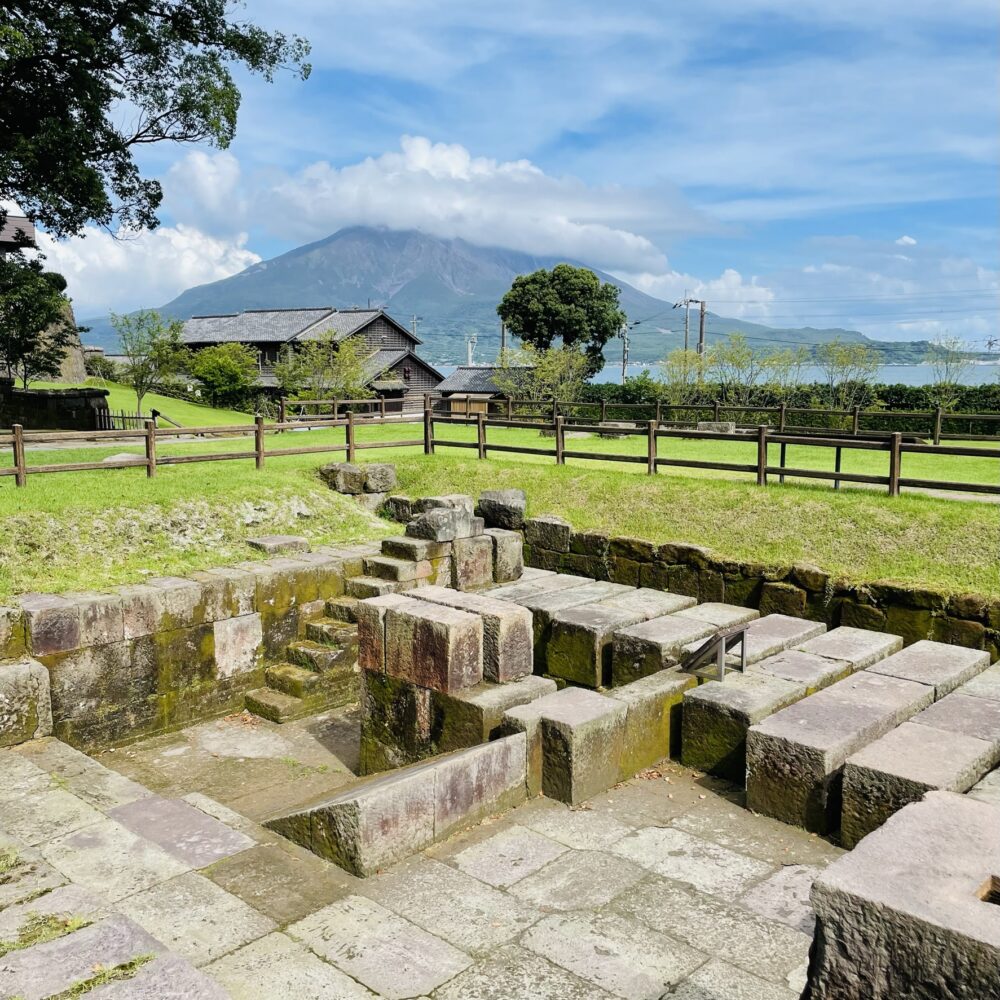
3: Tram and Shiroyama Hotel
Streetcars are running in Kagoshima City. There are 18 companies operating streetcars in Japan. I love the unique scenery of the city where streetcars run because the speed of the streetcars is not so fast, which enriches the view of the city where people have been seeking only efficiency.

I visited Shiroyama Hotel Kagoshima and had a craft beer at The Lounge Casablanca. Since my visit was after 17:00, it was just happy hour (17:00-19:00: half-price drinks). It was great to drink craft beer in the air-conditioned lounge of a luxury hotel while enjoying the fantastic view of Sakurajima Island. Shiroyama Hotel Kagoshima produces its craft beer at Shiroyama Brewery, open for brewery tours from 10:00 to 17:00.
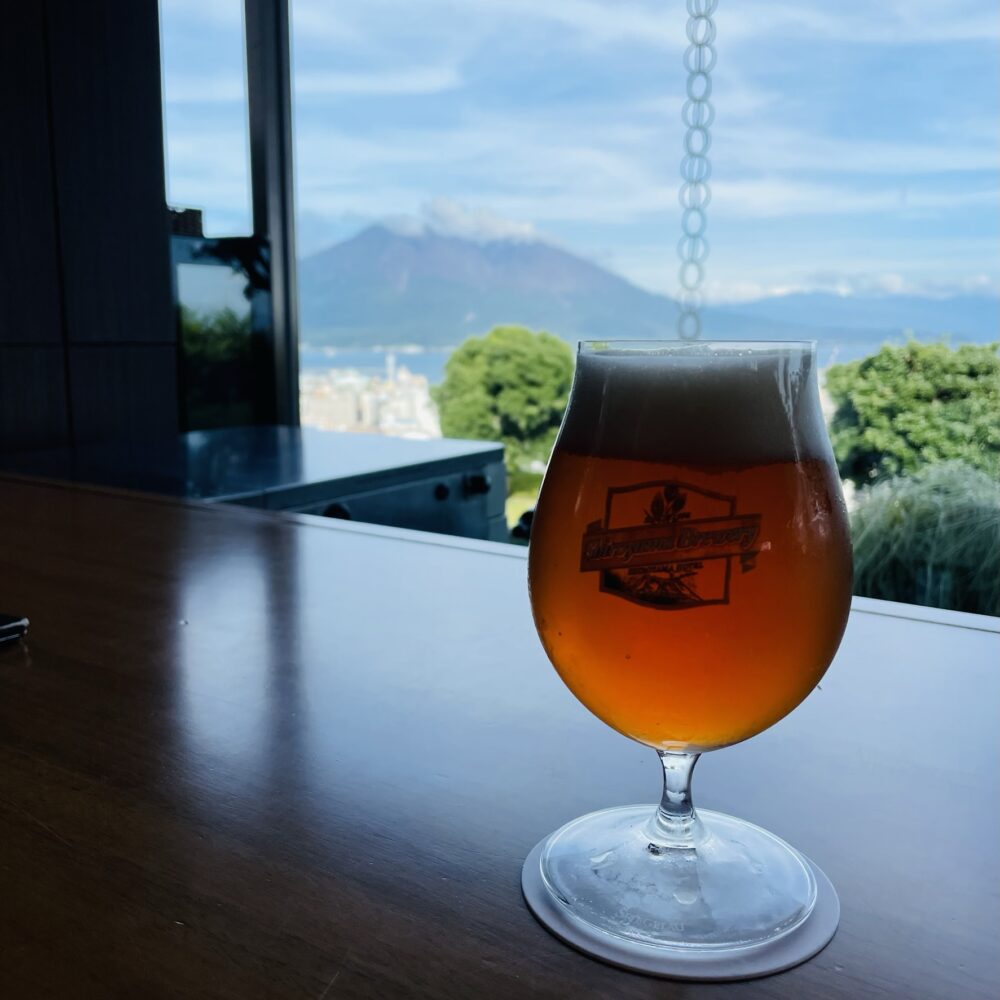
Outside ‘The Lounge Casablanca,’ a helmet worn by Shohei Ohtani of the Angels after hitting a home run in Major League Baseball is on display. This helmet was made by ‘Marutake Industry,’ a company based in Satsumasendai, Kagoshima Prefecture.”
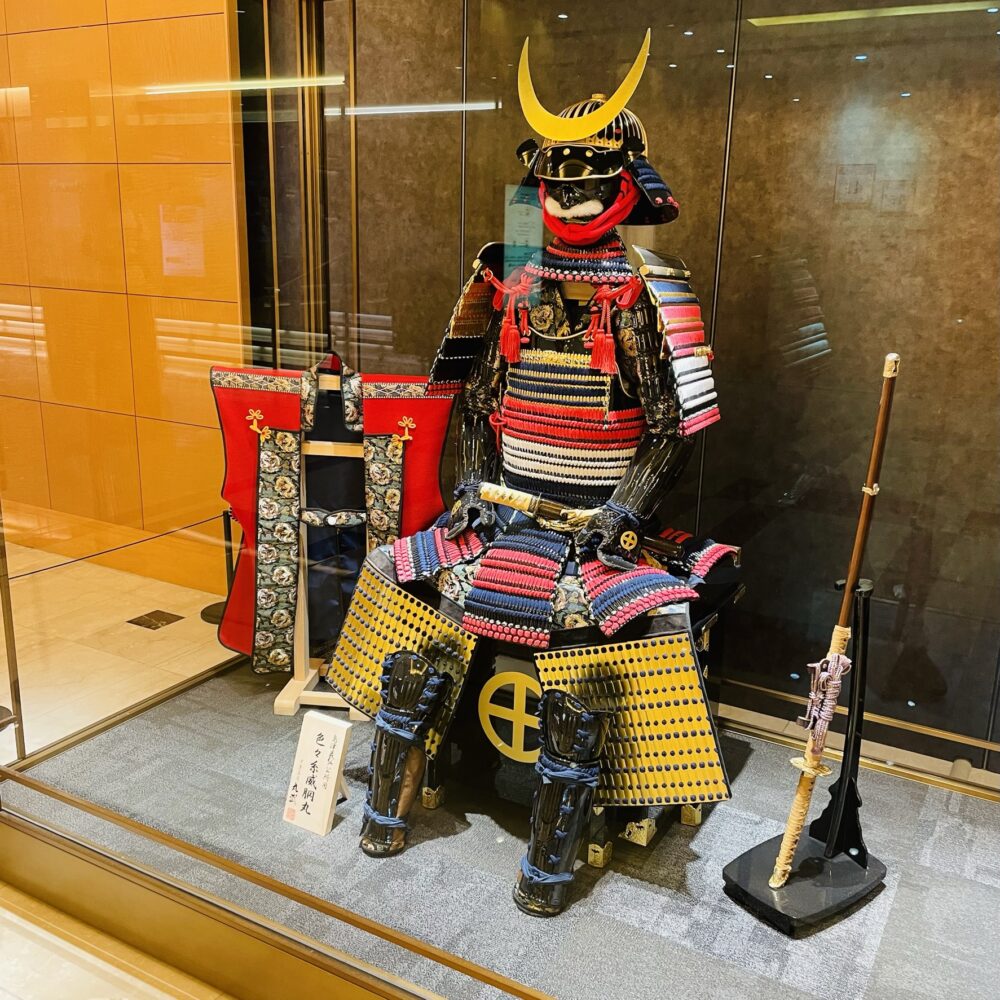
Shiroyama Hotel Kagoshima supports the Sustainable Development Goals (SDGs), aiming to realize a sustainable local community through various activities such as food loss reduction. Because of their high affinity with our services, we exchanged opinions with them the day after this meeting. Thank you very much.
4: Dinner and bar
Returning to the city from Shiroyama Hotel Kagoshima, I had dinner at “Ichiba Shokudo,” which was recommended to me by the hotel where I stayed. From the name “Ichiba Shokudo,” I thought it would be a casual sushi restaurant. Still, it turned out to be a very long-established and authentic sushi restaurant. The place was almost full of local customers.
I ordered and ate “Kibinago Sashimi” (Silver-stripe round herring sashimi), “Kubinore Saba Sashimi” (Neck-broken mackerel sashimi), “Satsuma-age” (Fried fish cake) and “Jidori Sashimi” (Local/free-range chicken sashimi) while drinking Satsuma shochu. Everything was excellent, and I left the restaurant very satisfied.
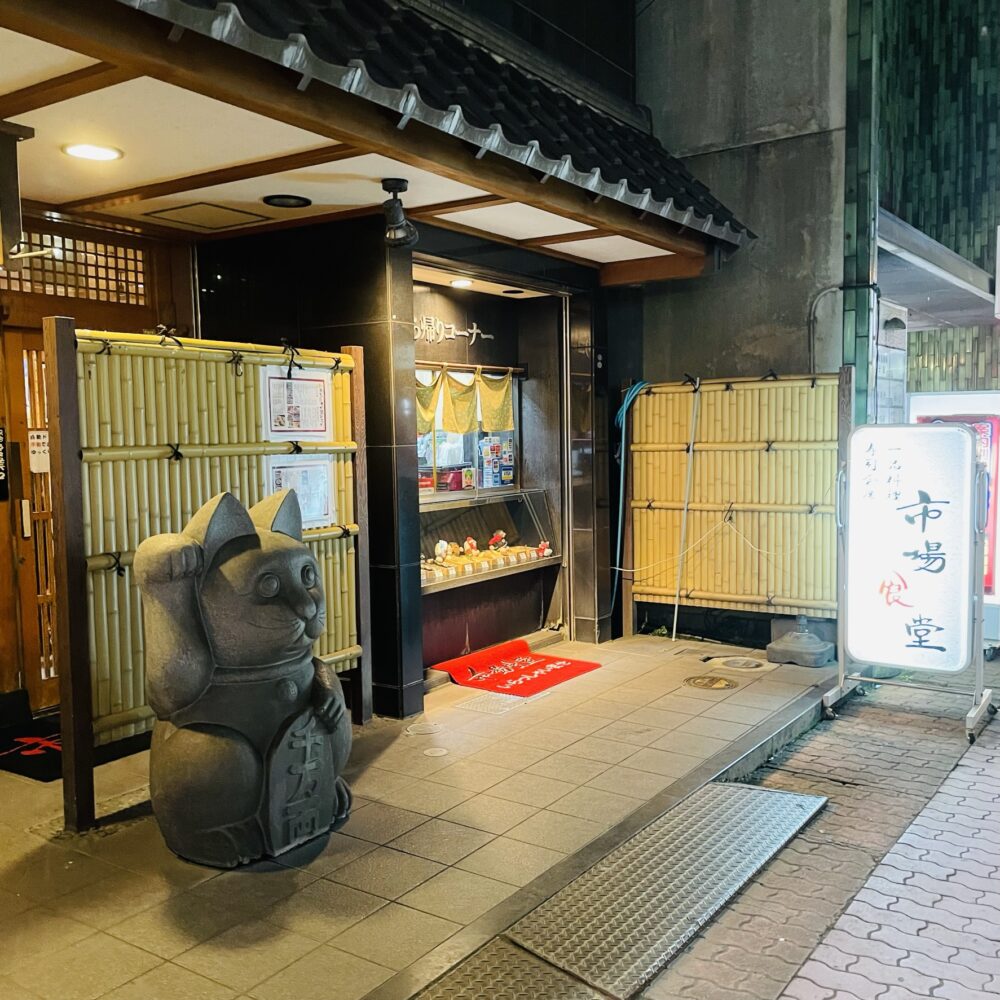
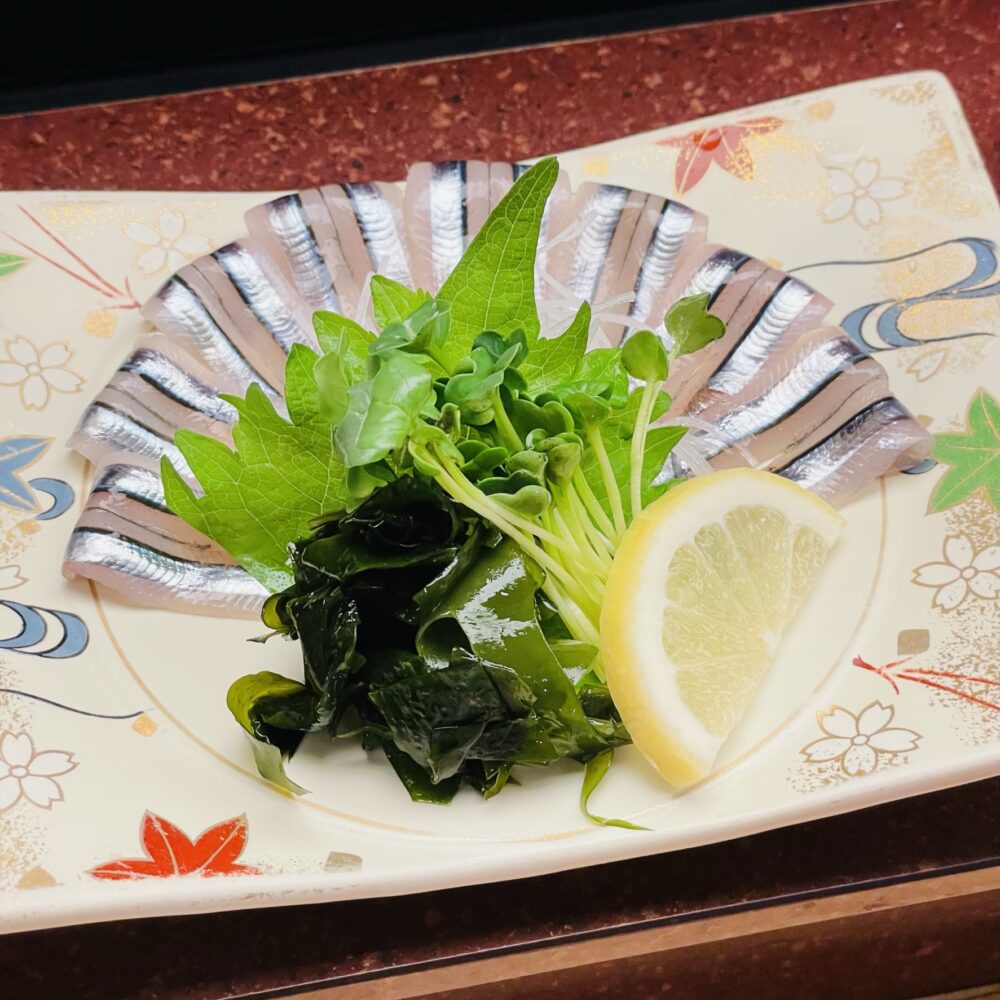
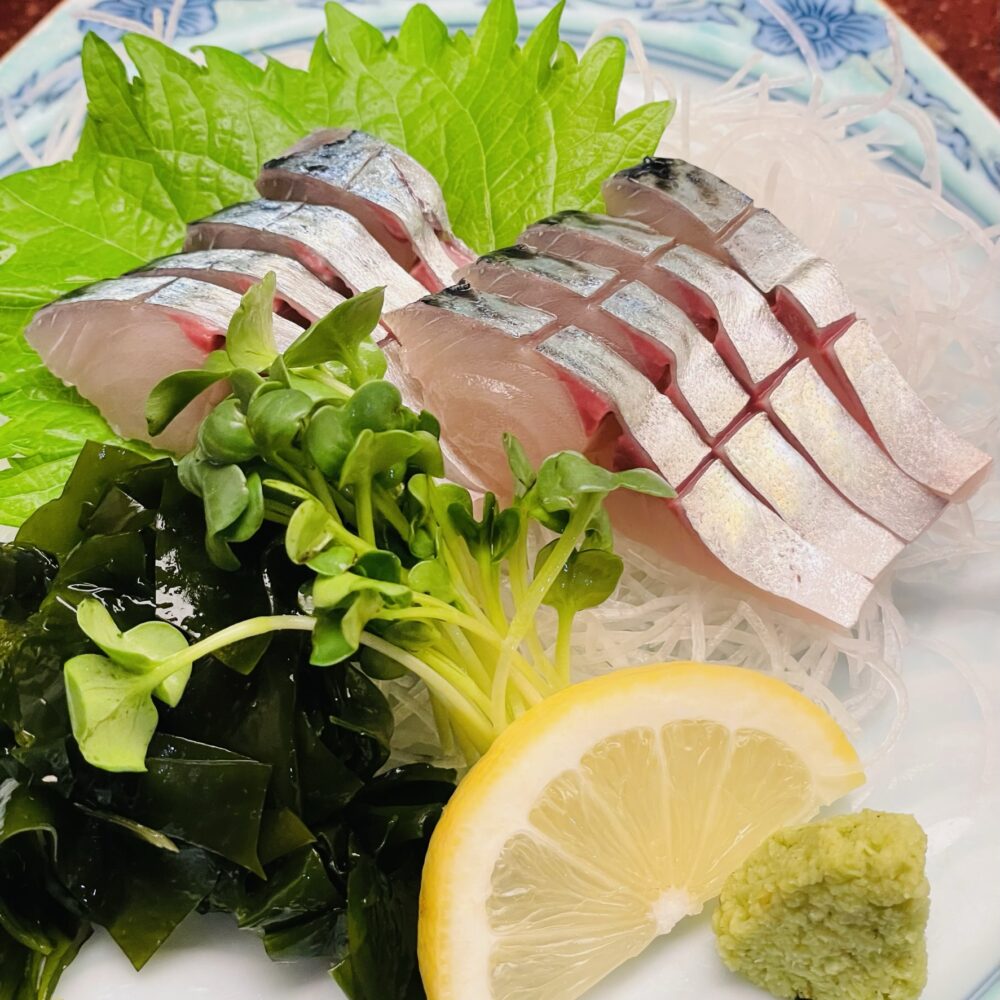
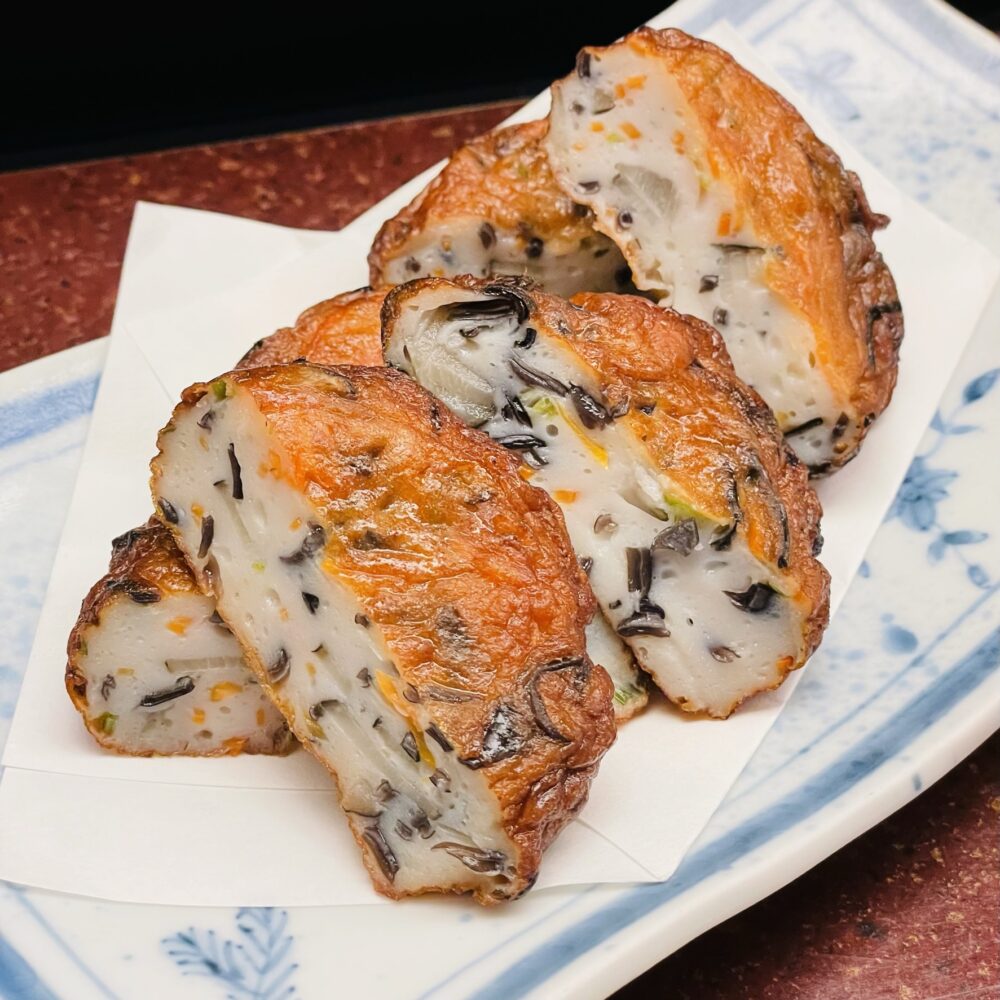
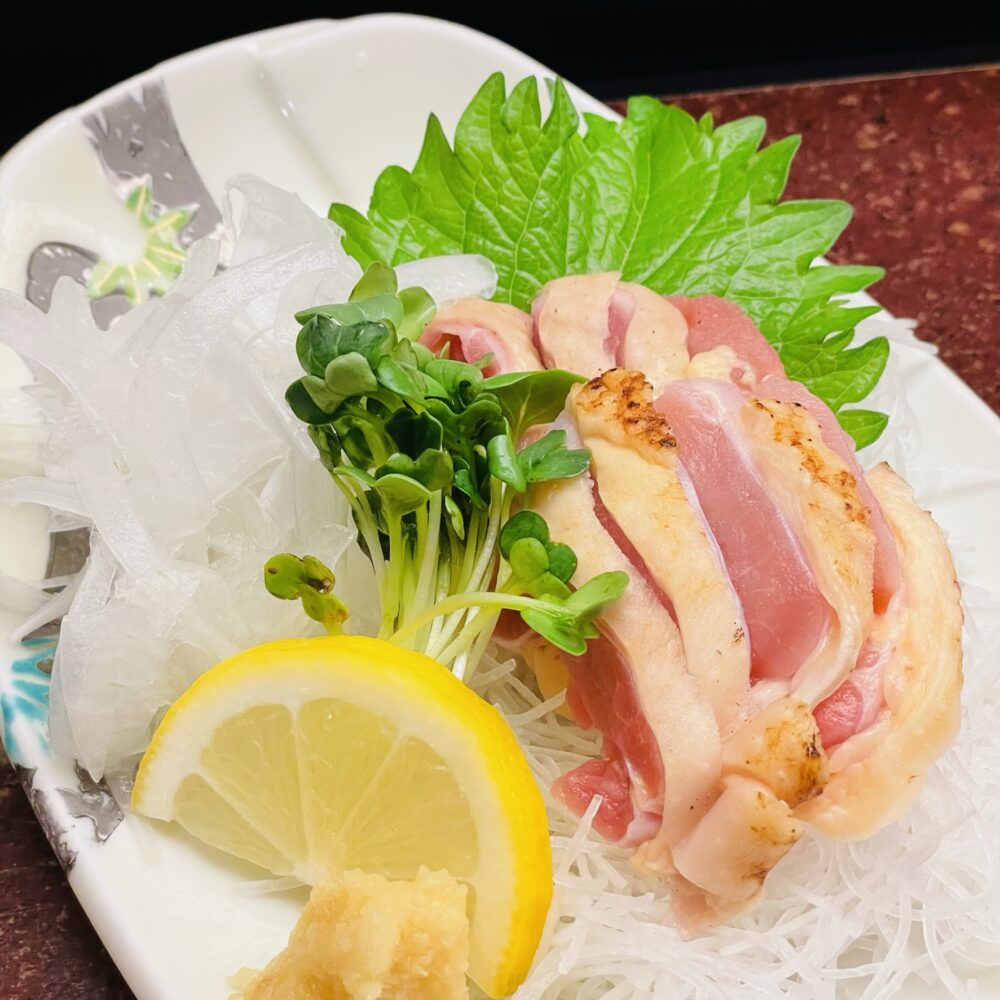
Afterward, I went to Bar Stinger for a delicious cocktail. “Bar Stinger” is a bar that has received a high score of 3.69 on the “Tabelog” list of the top 100 restaurants in Japan. The female bartender, who has won top prizes in national bartender contests, makes excellent cocktails. I had a great time talking with the regulars, and even as a first-time customer, I had a great time.
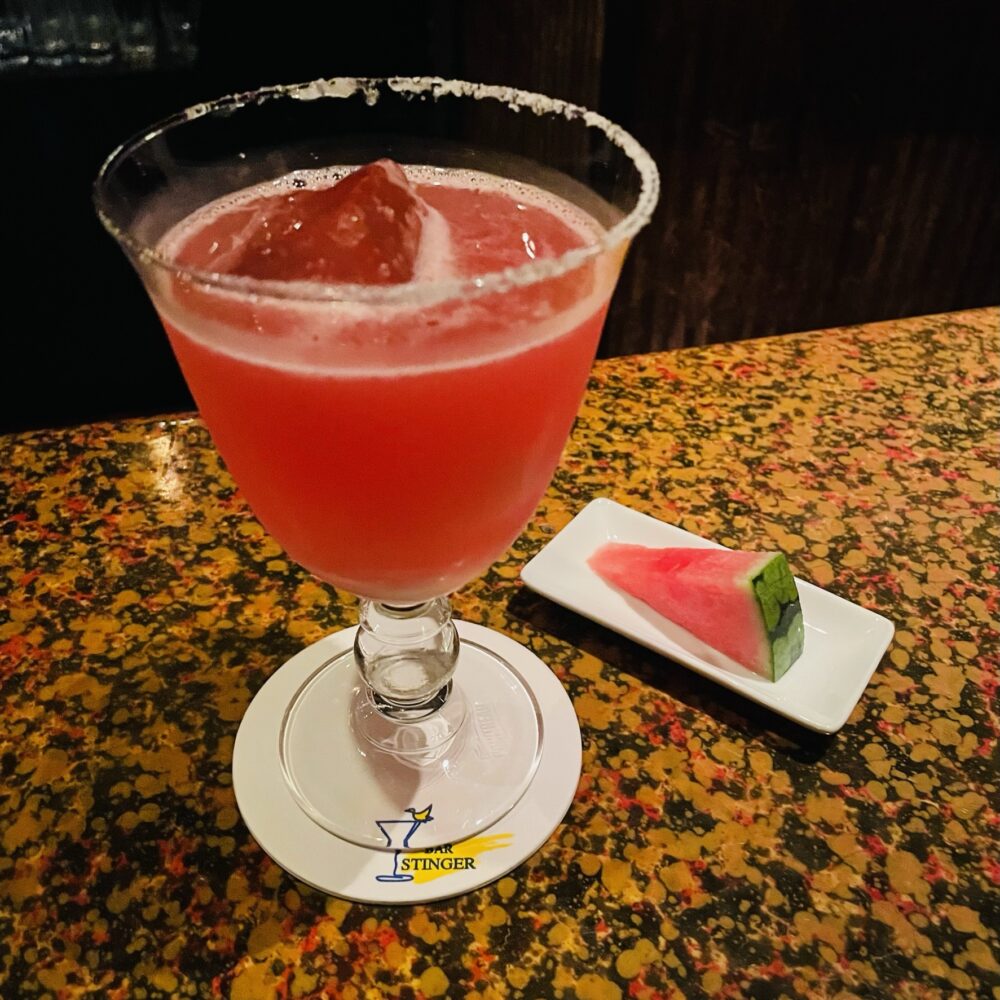

After all, Kagoshima is a city where we can enjoy delicious food and drink, and the people are amiable.
5: Lunch (eel bowl)
The next day, after a morning meeting at Shiroyama Hotel Kagoshima, I went to “Unagi no Sueyoshi” for a bowl of Kagoshima eel. Sueyoshi” is a popular restaurant, and when I arrived before 11:00 a.m., there was already a long line of people waiting to get in.
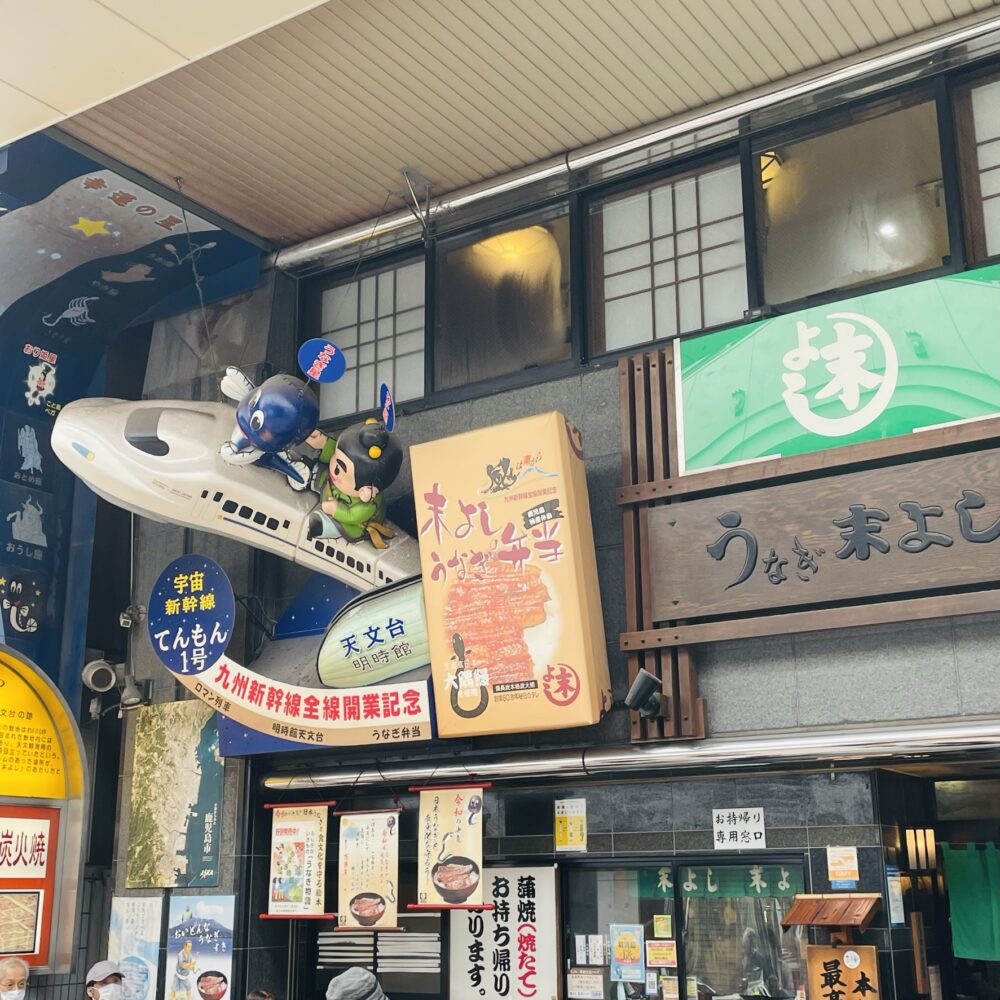
The “Unagi no Sueyoshi” eel bowl is served with eel on top of and inside rice. Their eel bowl with eel inside rice is also called “Mamushi” in Osaka and other parts of Kansai. The eel was tender and very tasty. I could understand why there was a long line for this dish.
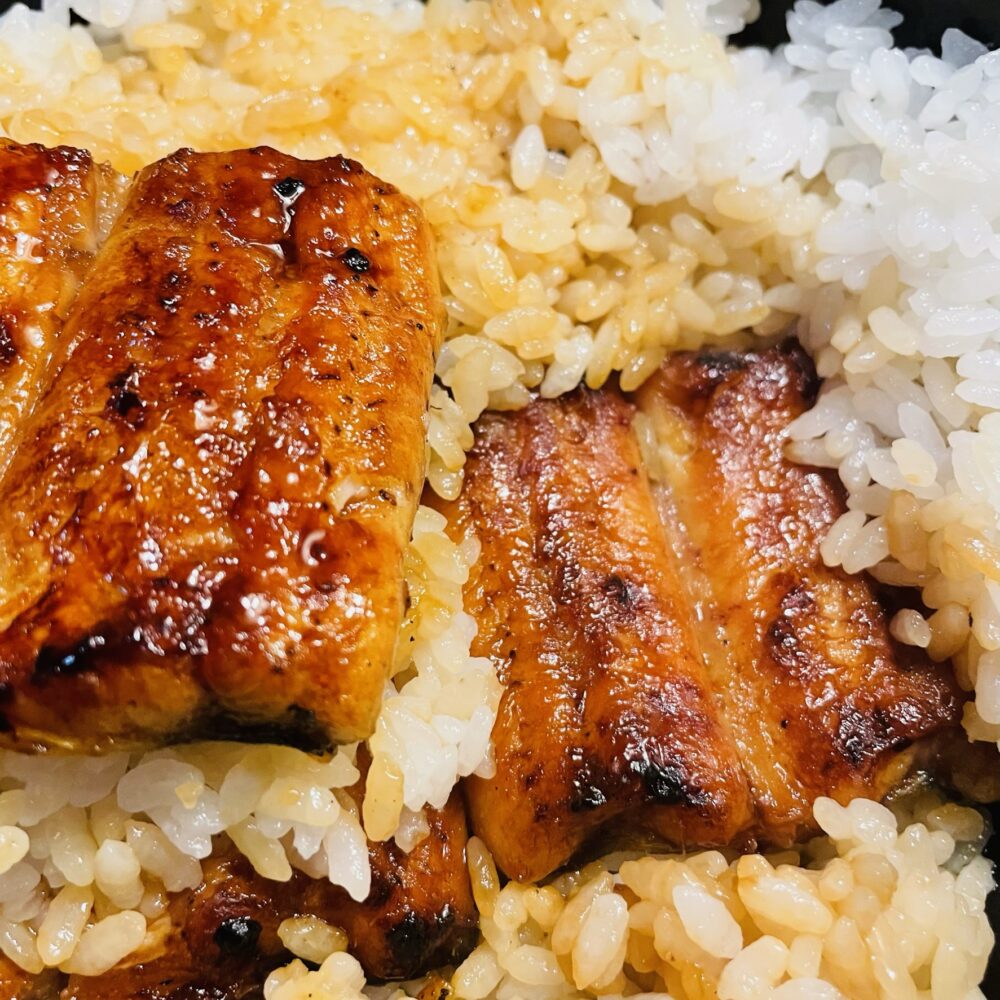
Kagoshima Prefecture is the largest prefecture in Japan in terms of eel production (aquaculture), with a 41% share of Japan’s total production. 7,858 tons were produced in 2022, far ahead of Aichi Prefecture in second place (4,205 tons), Miyazaki Prefecture in third (3,574 tons), and Shizuoka Prefecture in fourth (2,365 tons).
6: Visit to Kagoshima Prefectural Office
After a satisfying lunch, I visited the Kagoshima Prefectural Government and had a discussion about our services. The Kagoshima Prefectural Government spoke highly of our services that promote accessible and sustainable tourism. They even introduced me to the Kagoshima Prefectural Tourism Federation. I’m deeply grateful for their assistance.
Near the entrance of the Kagoshima Prefectural Office, there is a non-operational escalator, and atop it are lined empty bottles of Satsuma Shochu. In their effort to save electricity, the escalator remains stopped, and the space is adorned with empty bottles of Satsuma shochu — a unique idea indeed. I found this to be an exceptional initiative.
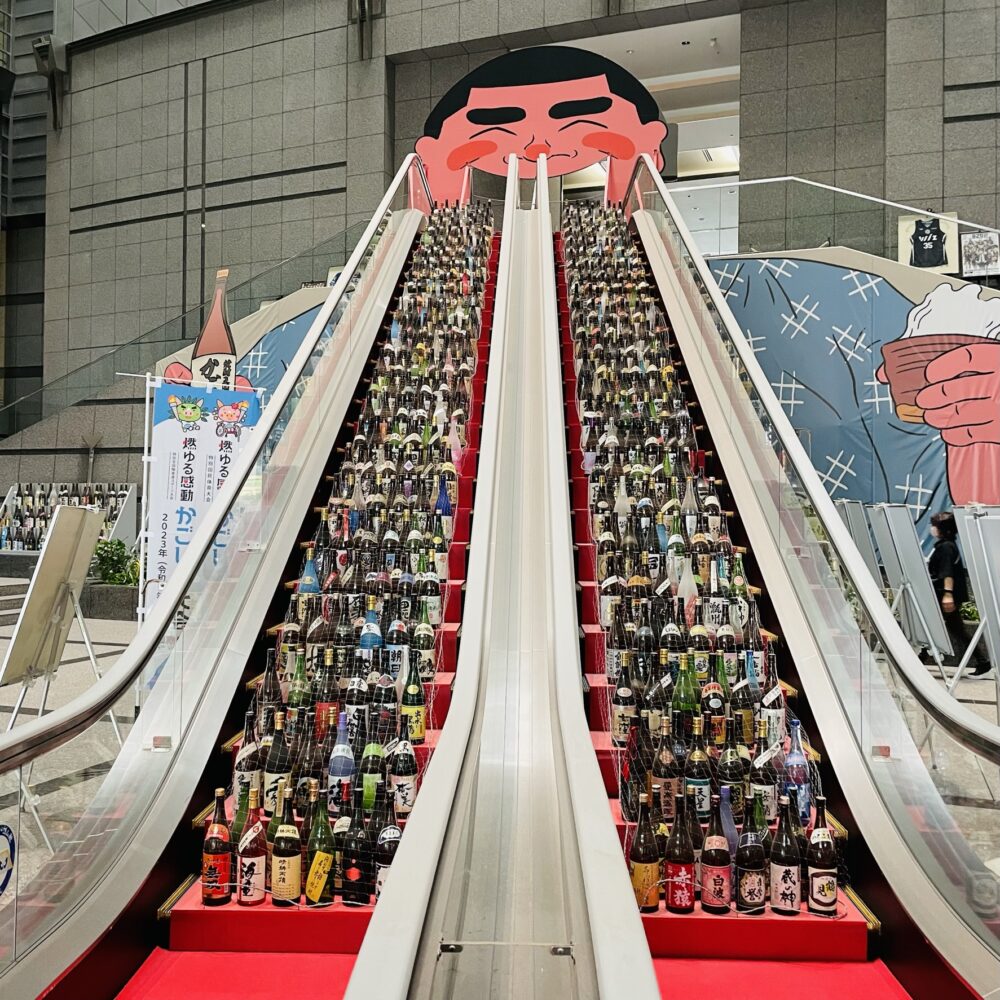
In addition, the observation lobby on the 18th floor of the Kagoshima Prefectural Office is free of charge and offers a panoramic view of Sakurajima. Unfortunately, it was cloudy on the day I visited, but the view is said to be the best on a clear day. It’s truly an off-the-beaten-path spot.
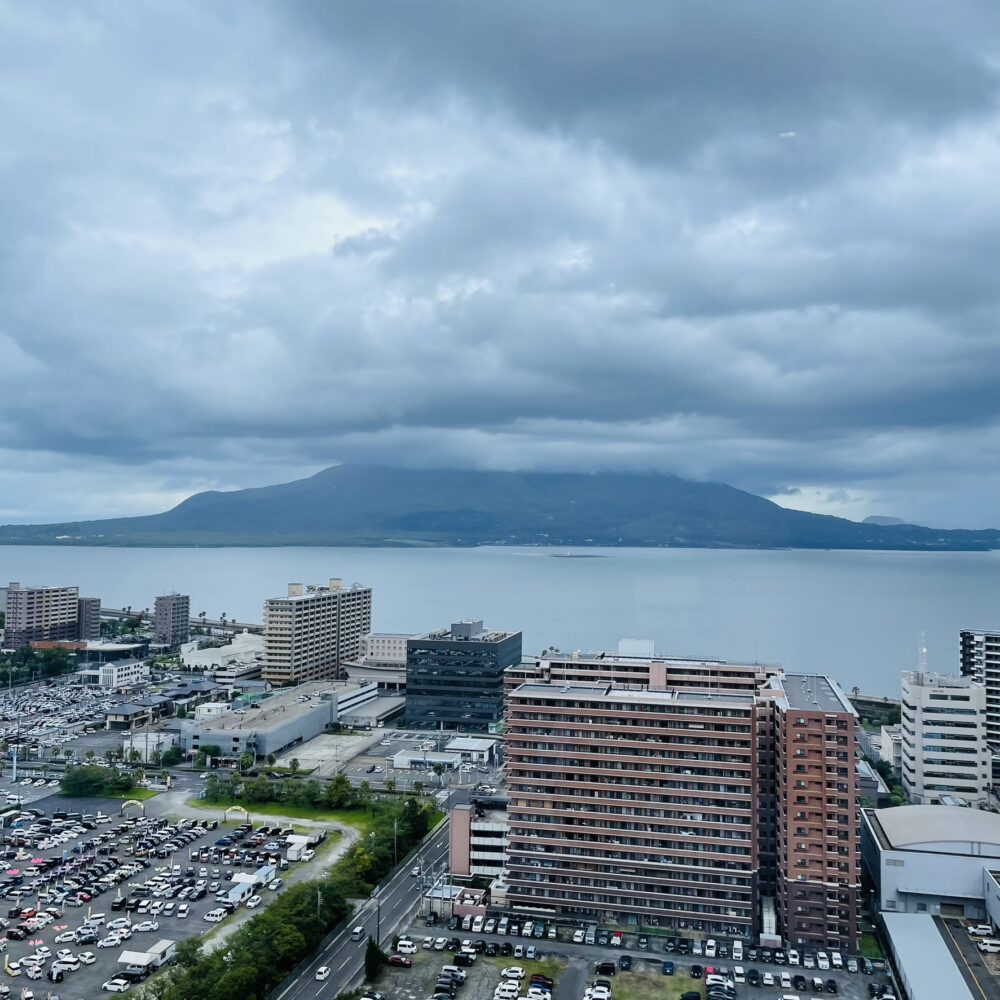
7: Dinner (Yamagataya Restaurant)
After the various meetings, I went to the restaurant in Yamagataya, introduced by the Kagoshima Tourism Federation. They are the only department store in Kagoshima Prefecture. I enjoyed the yakisoba there. This dish is considered the soul food of Kagoshima citizens. In Japanese, the term ‘soul food’, borrowed from English, refers not only to the traditional cuisine of African Americans but also to a special dish or food that holds sentimental value to an individual, region, or family. It conveys the idea of a comforting or nostalgic taste.
The yakisoba at Yamagataya is of the “Ankake kata yakisoba,” which uses thicker noodles, and the portion I received was surprisingly large. Despite my early visit, the restaurant was bustling with customers, most ordering this type of yakisoba.
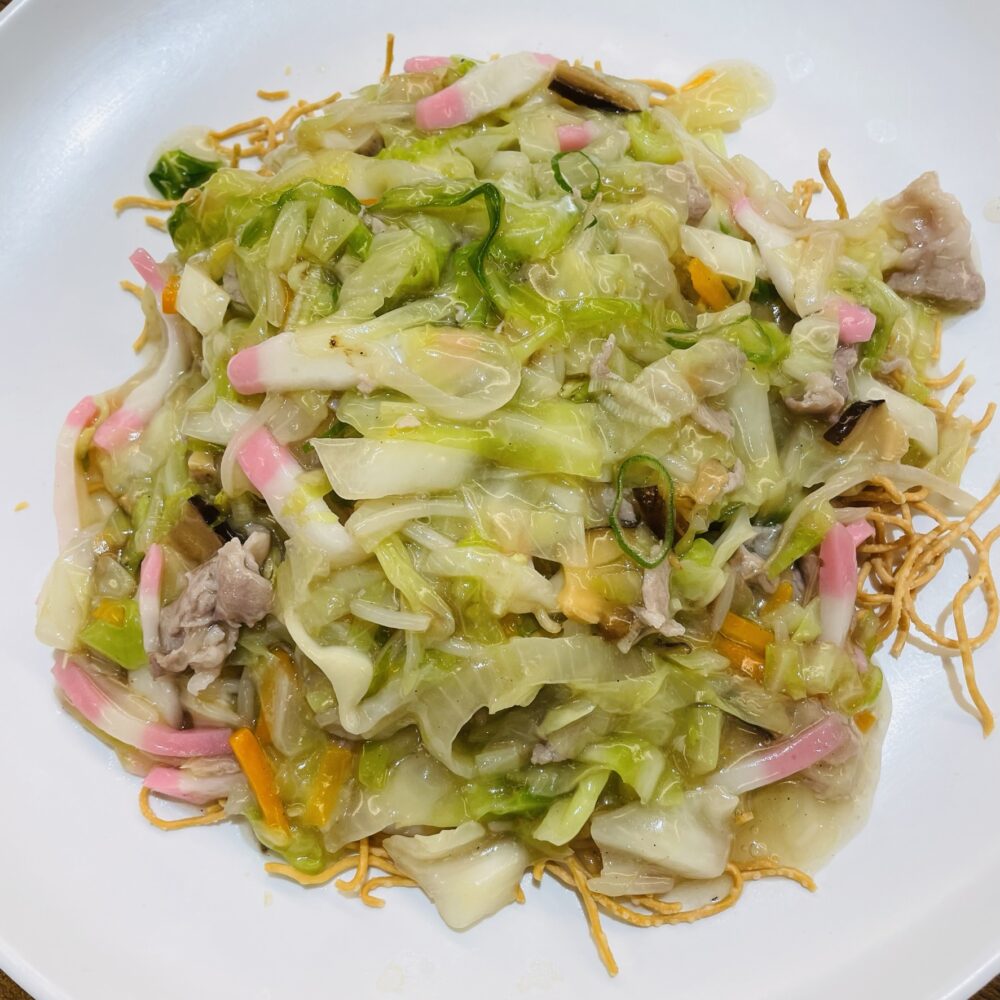
The staff recommended trying the yakisoba with a sweet vinegar sauce, which I did. Although I couldn’t discern significant differences between this “Ankake kata yakisoba” and similar dishes from other regions, such as Nagasaki’s Sara Udon, this yakisoba had a uniquely comforting flavor that I found very satisfying. Note that there’s also a “Yamagataya Restaurant” at Kagoshima Airport.
After thoroughly enjoying the yakisoba at Yamagataya Shokudo, I headed to Kagoshima Airport. I had Satsuma Shochu and Kagoshima’s local specialties: fried Kibinago (silver-stripe round herring) and a pork bone dish at “Ozora Shokudo.” Both meals were impressively high-quality. Although “Ozora Shokudo” is an airport restaurant, they offer shochu at remarkably low prices. I was truly befitting of an airport restaurant in Kagoshima, the shochu capital of Japan.

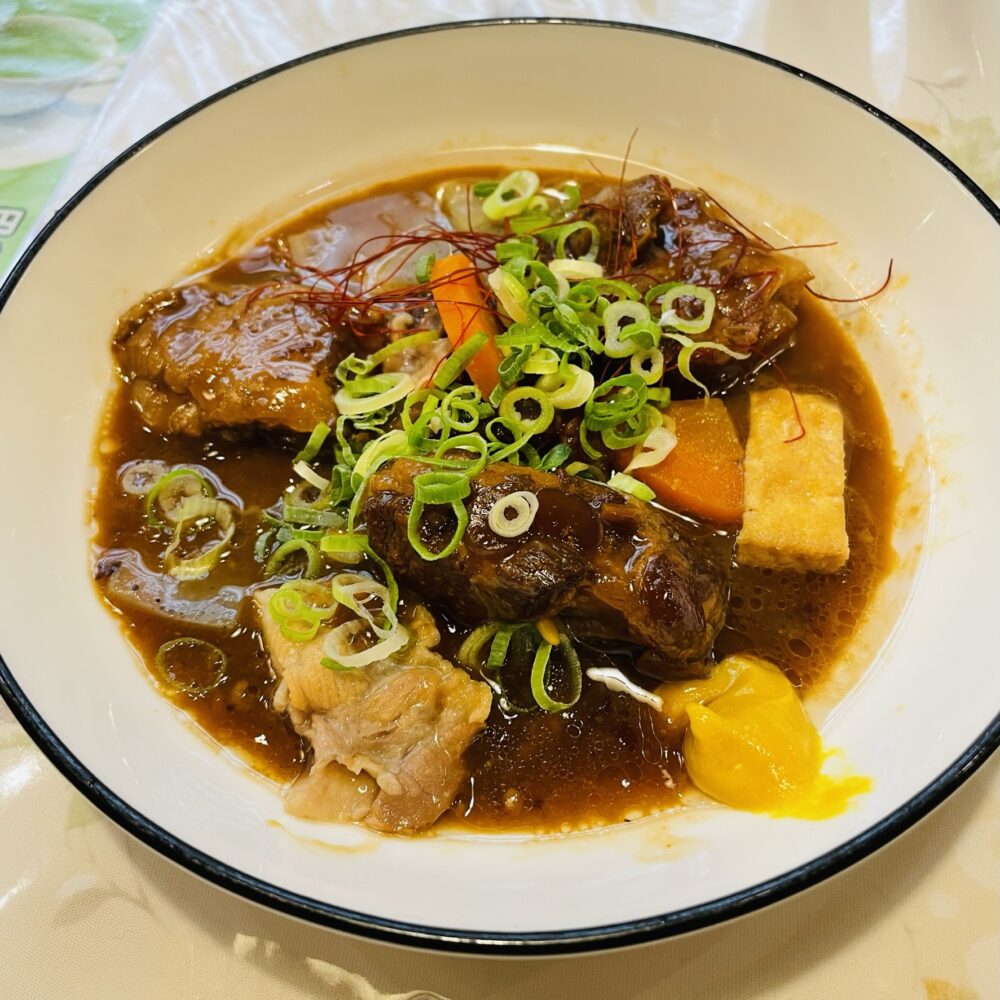
8: Airplane and sky
Although the primary purpose of my visit to Kagoshima was for business, I enjoyed other sightseeing and dining to the fullest and was very satisfied with my trip. The sky from the plane was so beautiful that I couldn’t help taking pictures.

In addition, the plane I boarded was the “Kimetsu no Yaiba Jet,” and the in-flight announcement was given by the voice actor of “Kimetsu no Yaiba,” which surprised the passengers.
